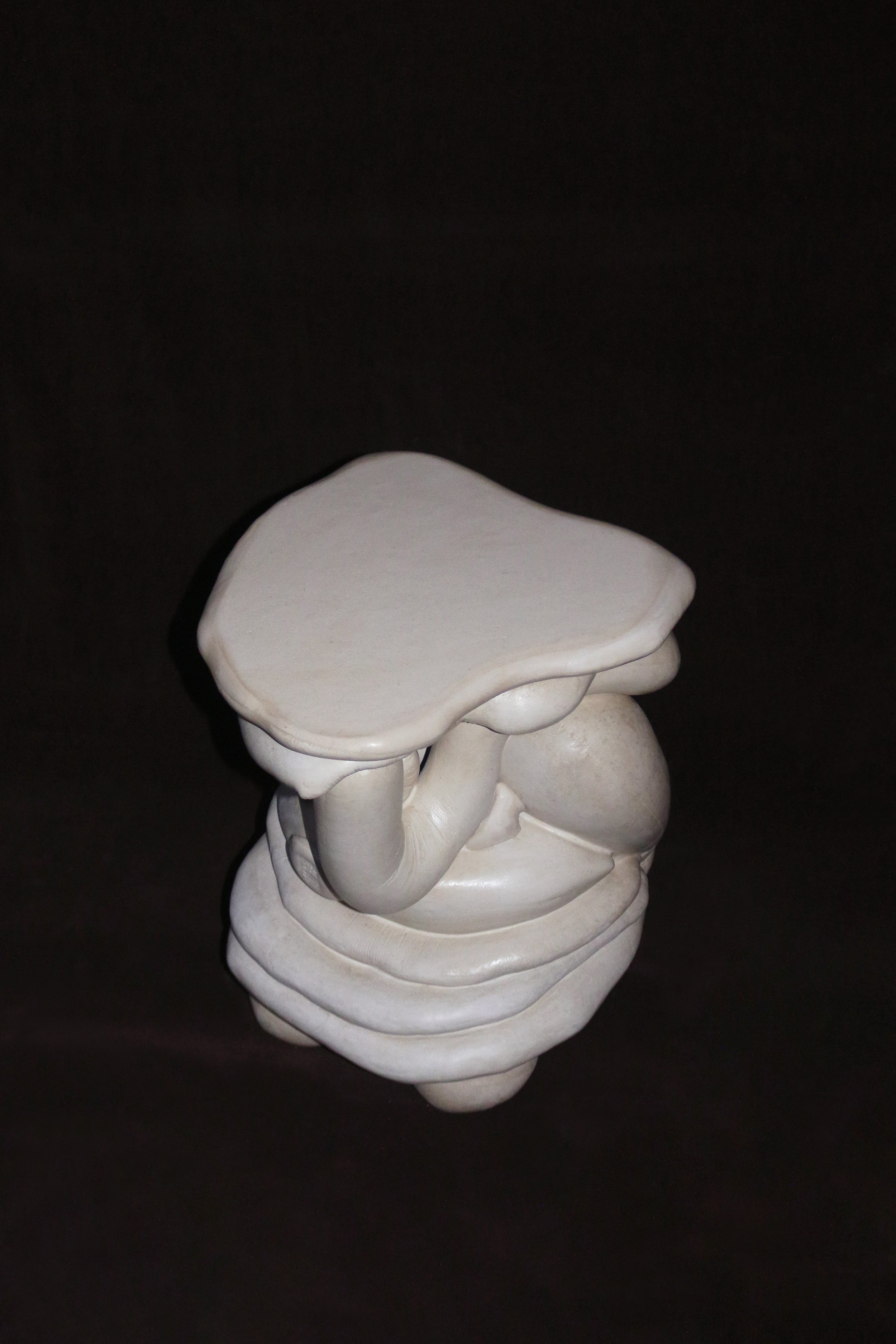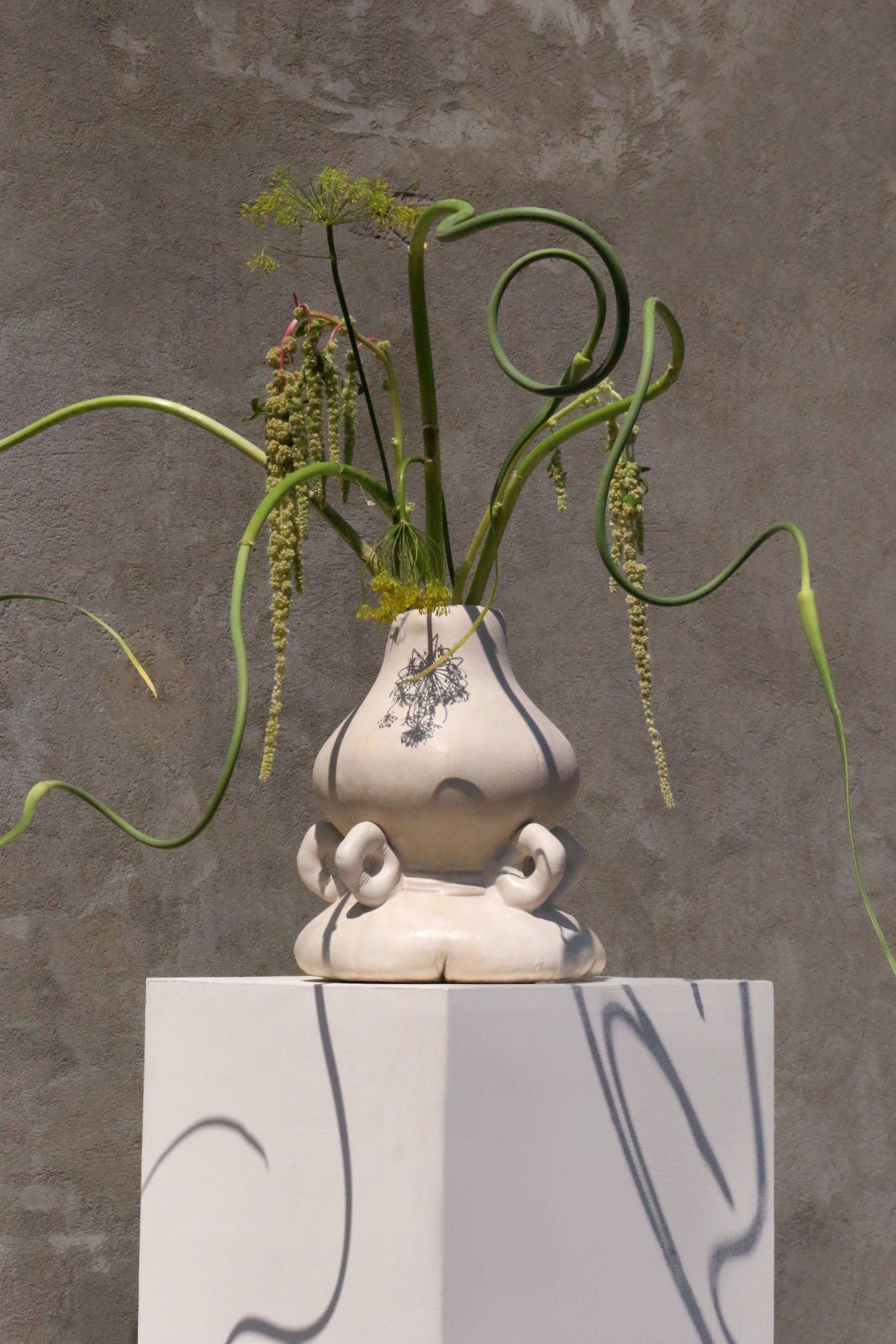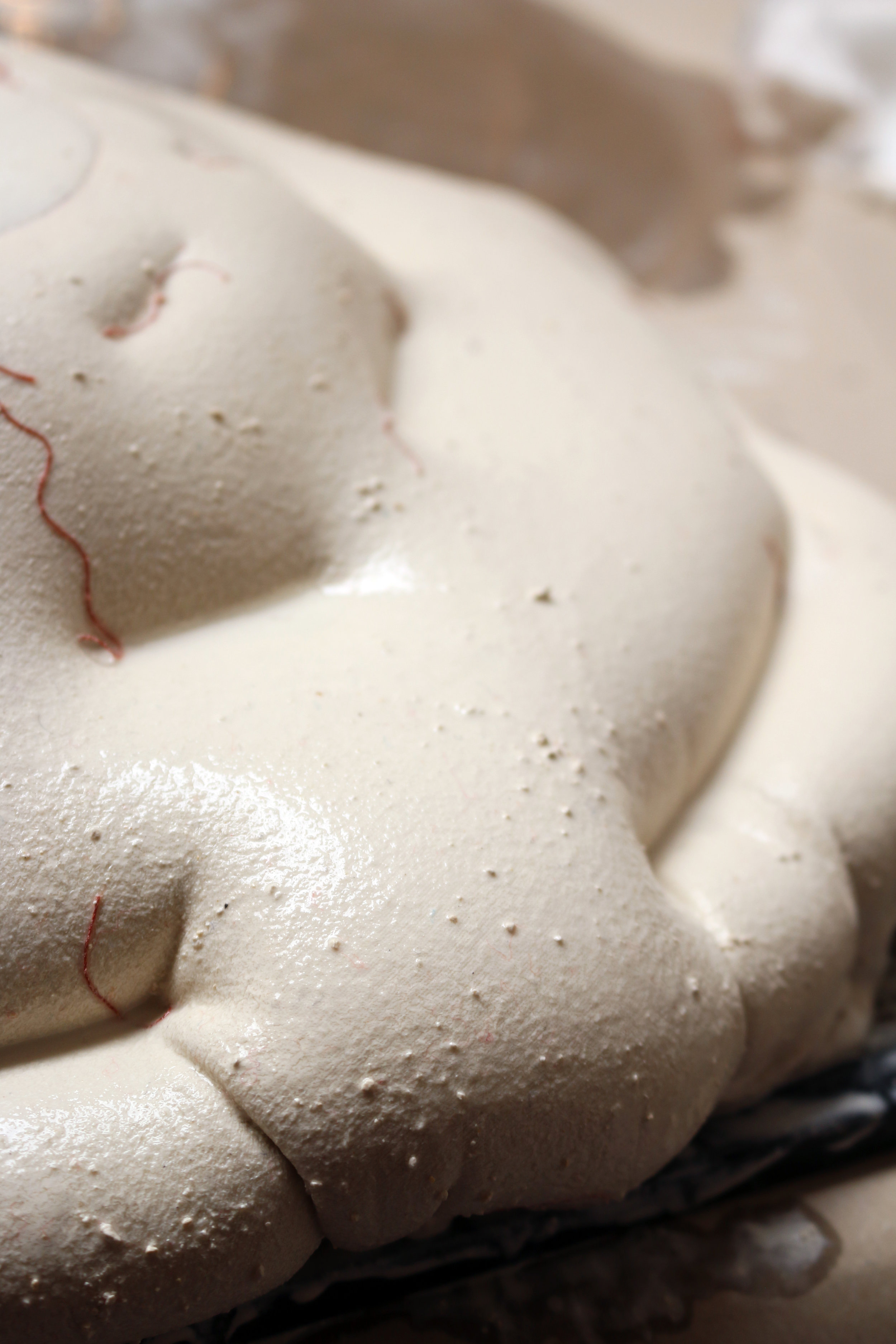As a raw material, milk’s biography runs the length of human existence. Milk has contributed to the development of civilisation as we know it, with some of the earliest human artefacts including vessels containing residues of cow’s milk. In Egyptian mythology, the Milky Way was viewed as a pool of cow's milk, while the Greek name for the Milky Way (Γαλαξίας or Galaxias) stems from the Greek word for milk (γάλα, gala). Through milk, new life is sustained. This liquid, the elixir of life, is responsible for the continuity of our living world.
The idea behind Feminised Protein first came from research into Pre-industrial materials. Long before plastics existed, milk was used as a building material. One example can be found at Alfriston Clergy House in Sussex, a mediaeval timber-framed hall house built in 1350 featuring a rare chalk and sour milk floor used as an early form of cement. By revisiting and adapting little-known historical processes, Tessa’s work connects our past, present and future.
Milk, tied to the nourishment and labour of mammals, symbolises both sustenance and sacrifice. Its industrial processing often conceals the embodied realities of production, mirroring how societal structures have historically devalued the contributions of women and female-identifying individuals. By reclaiming milk as a material and shaping it into organic forms, the work critiques these systems while celebrating the labour, memory, and resilience embodied by both the material and the bodies it represents, making visible the histories and sacrifices entwined in acts of creation and care.
With a process-led approach to design and making, Tessa uses traditional techniques and evolves them to invent new ways of working. She sews her own moulds from deadstock fabric, mimicking traditional uses of cheesecloth for setting cheese. Waste milk is sourced from a raw organic dairy farm in Sussex. Since the farm is very small with less than 40 cows, the material is finite, generated from the separation process used to make cream. By repurposing the disposed-of fluid and giving it tangible form, Tessa looks to turn something perishable into something enduring. Through Feminised Protein, she re-assigns value to a forgotten material which would otherwise be discarded as waste by making fine objects which will last forever.
The question of how to contain a living, flowing form is answered through fabric moulds which allow the material to swell while staying free from constraints. Accepting the properties and idiosyncrasies of the material, reflecting its original form by always retaining a sense of fluidity. When the cast liquid dries to solid, from soft to stone-like consistency, the fabric is peeled off. As seams and stitches are delicately imprinted onto the swollen surfaces of Silva’s tender, feminine sculptural forms, the memory of fabric remains, a permanent reminder of the materials’ living, flowing liquid origins.
























